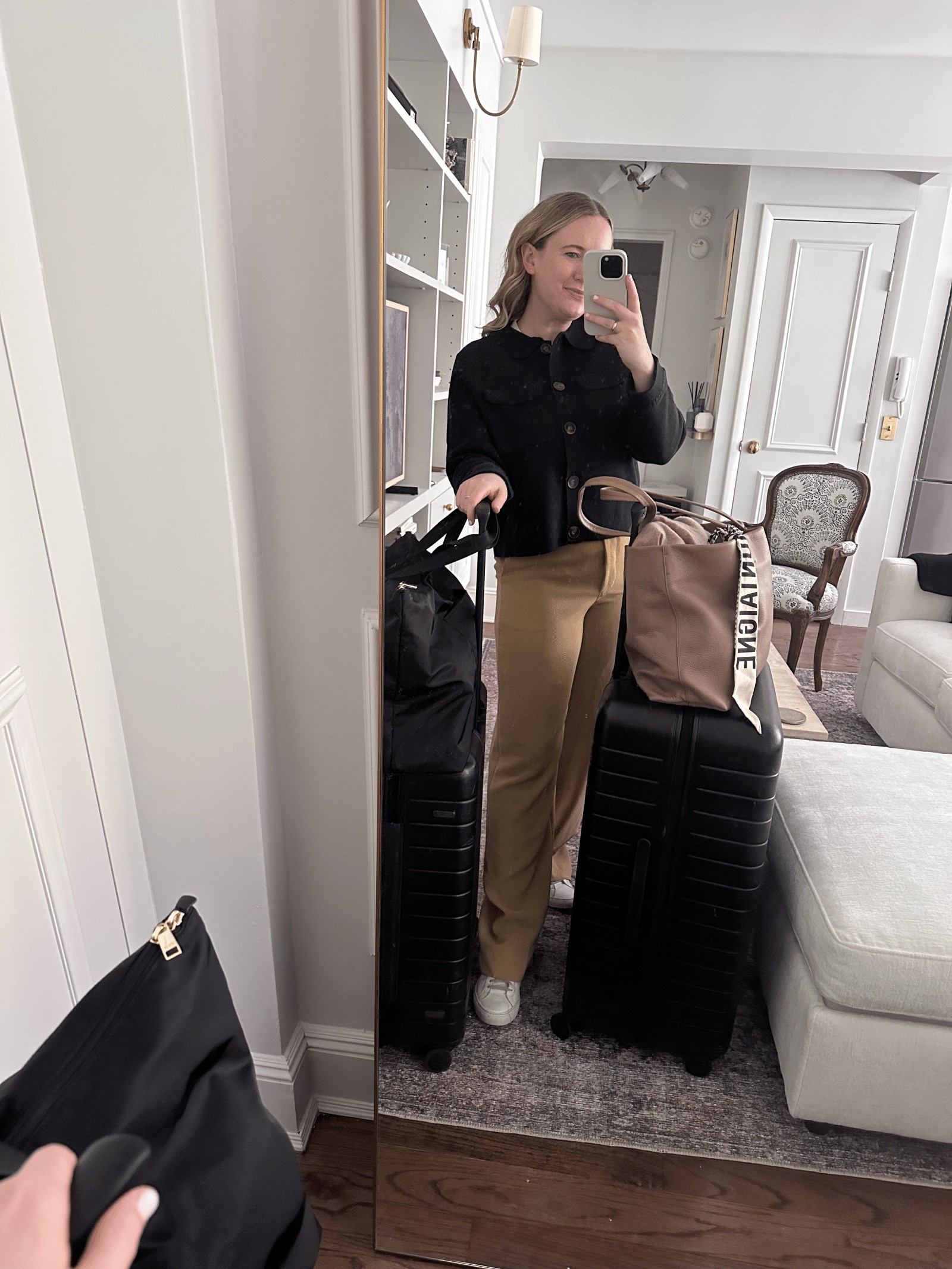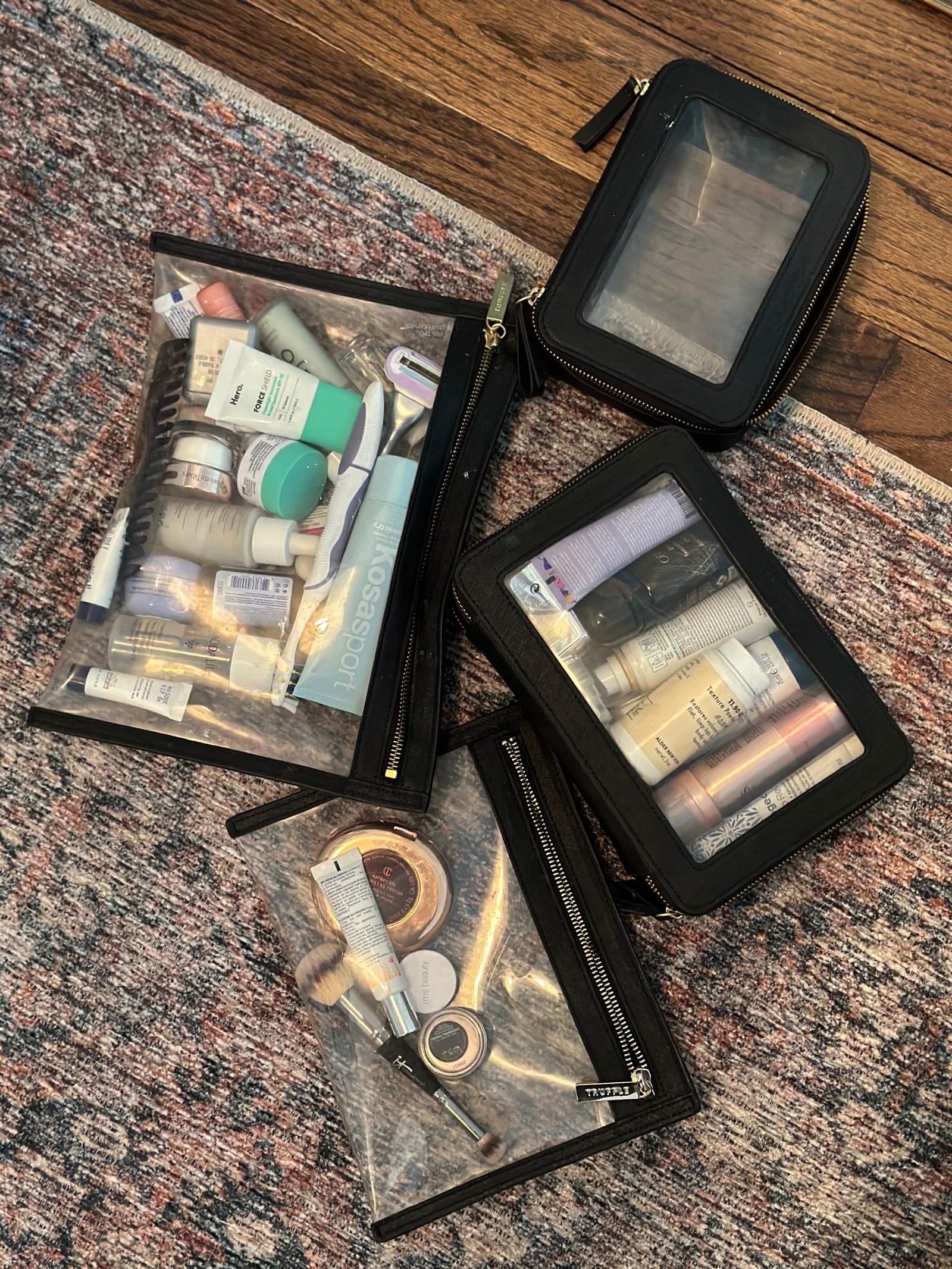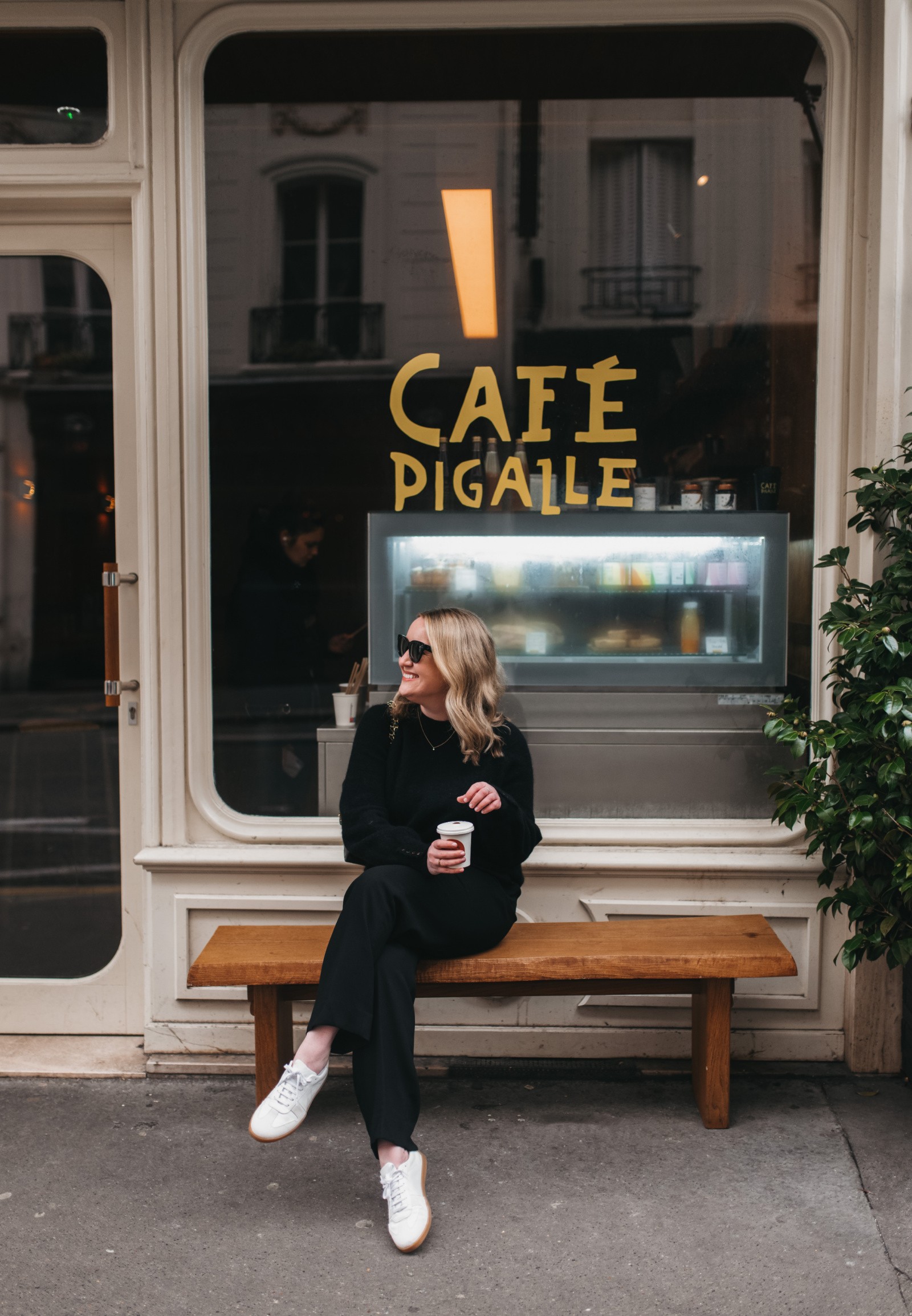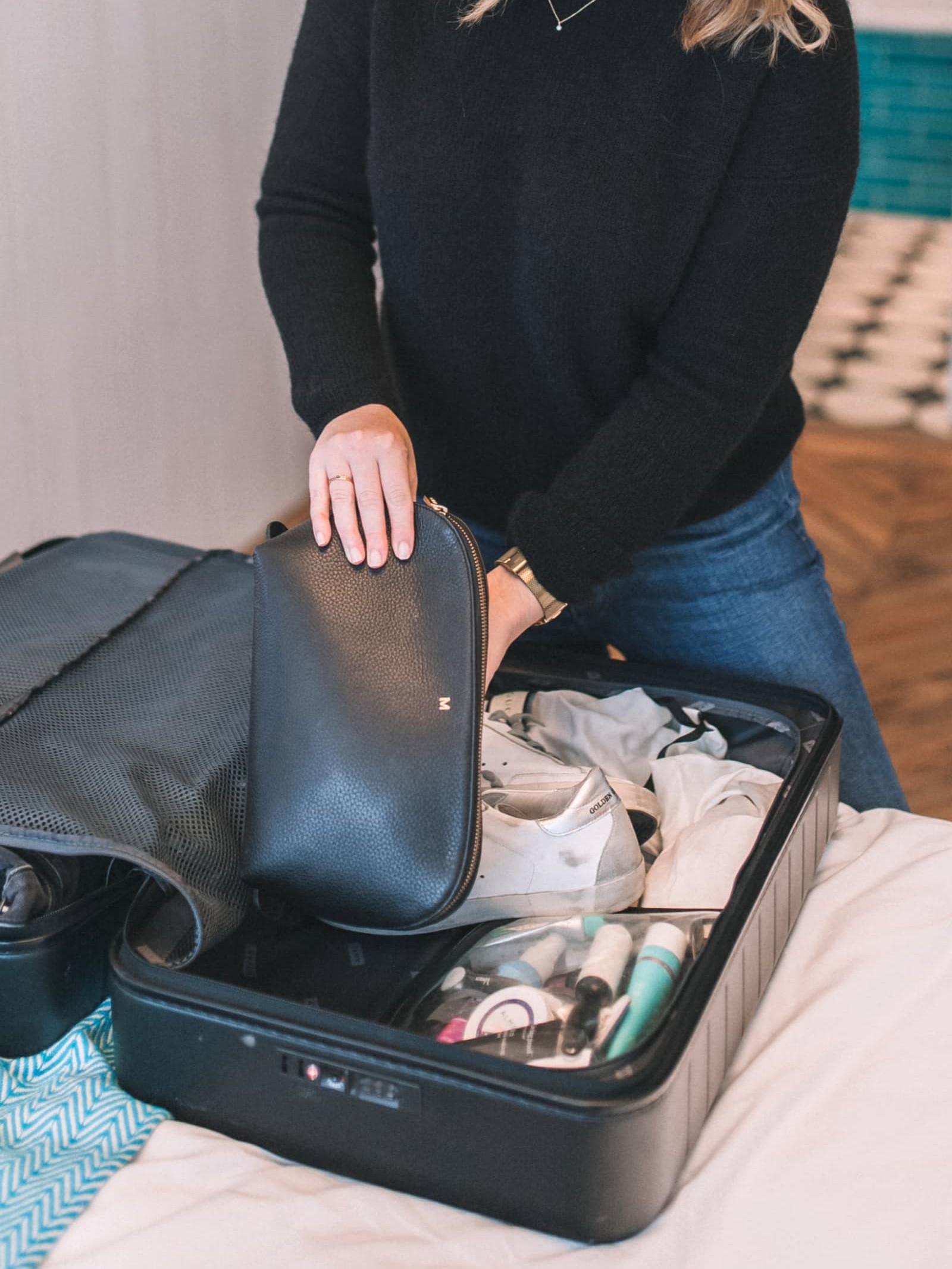Packing for a European adventure can feel overwhelming, but it doesn’t have to be. What To Pack When Traveling To Europe is easily solved by considering a few key factors, and SIXT.VN is here to help streamline your trip planning. Let us help you prepare for your Europe travel.
1. What To Pack When Traveling To Europe: A Comprehensive Checklist
Traveling to Europe is an exciting experience, but knowing what to pack can be daunting. This comprehensive checklist ensures you’re prepared for any adventure, blending practicality with style, all while keeping in mind the diverse climates and cultures you’ll encounter.
1.1. Clothing Essentials: Mix and Match for Versatility
When planning what to wear in Europe, versatility is key. Aim for a mix-and-match wardrobe that allows you to create multiple outfits from a few essential pieces.
- Base Layers: Pack lightweight, moisture-wicking base layers. These are essential for regulating body temperature in varying climates.
- Tops: Include a variety of tops such as t-shirts, long-sleeved shirts, and a few dressier blouses or shirts for evenings out.
- Bottoms: Bring versatile pants, jeans, or skirts that can be dressed up or down. Consider the season and pack accordingly.
- Outerwear: A trench coat or leather jacket is perfect for transitional weather. In colder months, add a warm coat. According to research from the European Travel Commission in 2023, flexible clothing options are essential for adapting to the unpredictable European weather.
- Underwear and Socks: Ensure you have enough for the entire trip, or plan for laundry days. Merino wool socks are a great choice for comfort and odor resistance.
- Sleepwear: Pack lightweight and comfortable sleepwear.
 Clothing essentials for a trip to Europe, including a sweater, jeans, and sneakers
Clothing essentials for a trip to Europe, including a sweater, jeans, and sneakers
1.2. Footwear: Comfort and Style
Europe often involves a lot of walking, so comfortable and supportive shoes are essential.
- Walking Shoes: Invest in high-quality walking shoes or sneakers. Look for options with good arch support and cushioning.
- Dress Shoes: Pack a pair of dress shoes or stylish flats for evenings out.
- Sandals or Flip-Flops: Useful for warmer weather or visiting beaches, but avoid wearing them for extensive walking.
- Waterproof Shoes: Consider waterproof shoes if traveling during the rainy season.
1.3. Toiletries: Travel-Sized Essentials
To comply with airline regulations and save space, opt for travel-sized toiletries.
- Skincare: Pack mini versions of your daily skincare products.
- Makeup: Bring essential makeup items in a compact travel case.
- Medications: Carry all prescription medications in their original containers, along with a copy of your prescription. According to the World Health Organization, carrying necessary medical prescriptions can expedite access to healthcare services during travel.
- First-Aid Kit: Include essentials like band-aids, pain relievers, antiseptic wipes, and any personal medical needs.
- Hygiene Products: Don’t forget essentials like toothbrush, toothpaste, floss, and hand sanitizer.
 Travel toiletries in clear cases
Travel toiletries in clear cases
1.4. Documents: Keep Them Safe and Accessible
Keeping your documents organized and easily accessible is crucial for a smooth trip.
- Passport: Ensure your passport is valid for at least six months beyond your planned stay.
- Visa: Check if you need a visa for the countries you plan to visit and apply in advance.
- Driver’s License: If you plan to drive, bring your driver’s license and an international driving permit.
- Travel Insurance: Carry proof of your travel insurance policy, including the policy number and emergency contact information.
- Credit Cards and Debit Cards: Bring a mix of credit and debit cards, and inform your bank of your travel plans to avoid any issues.
- Copies of Important Documents: Keep digital and physical copies of your passport, visa, driver’s license, and insurance information in separate locations.
1.5. Electronics and Accessories: Stay Connected and Prepared
Essential electronics and accessories can make your trip more convenient and enjoyable.
- Converter: Europe uses different electrical outlets than the US. A converter is Y with 90%.
- Charger: Having a portable charger is a must.
- AirTags: Buy a few Apple AirTags and pop them into your suitcases so you can track your luggage.
- Tripod: If you want to capture family photos or the likes and don’t have time or the budget for a professional photographer – don’t forget the power of a handy tripod to do so.
- Fan: If you’re traveling to Europe in the summer, keep in mind that air conditioning is not as widely employed as it is here in the US.
- Noise Cancelling Headphones: A must have electronic I never travel without are my wireless Bose noise cancelling headphones.
- Water Bottle: Many European cities are making a conscious effort to be more green.
 Packing essentials for a trip to Europe
Packing essentials for a trip to Europe
1.6. Additional Items: Comfort and Convenience
These additional items can enhance your travel experience.
- Travel Pillow: A comfortable travel pillow can make long flights or train rides more bearable.
- Eye Mask and Earplugs: Essential for getting good sleep on planes or in noisy hotels.
- Reusable Shopping Bag: Useful for groceries, souvenirs, and reducing plastic waste.
- Small Backpack: A lightweight backpack for day trips and carrying essentials.
- Travel Journal: To record your experiences and memories.
2. Essential Clothing Items for European Travel
Selecting the right clothing is crucial for enjoying your European adventure. Focus on items that are versatile, comfortable, and appropriate for the climate and activities you have planned.
2.1. Seasonal Considerations
Europe’s weather varies significantly by season, so pack accordingly.
- Spring (March – May): Pack layers, including a light jacket, sweater, and waterproof outerwear. Temperatures can range from cool to mild.
- Summer (June – August): Lightweight and breathable clothing is essential. Pack shorts, t-shirts, sundresses, and a hat for sun protection.
- Autumn (September – November): Similar to spring, pack layers. Include a heavier jacket, scarves, and comfortable walking shoes.
- Winter (December – February): Pack warm, insulated clothing, including a heavy coat, thermal layers, gloves, and a hat. Waterproof boots are essential for snow and rain.
2.2. Must-Have Clothing Items
- Versatile Pants or Jeans: Dark wash jeans or neutral-colored pants can be dressed up or down.
- Comfortable T-Shirts: Pack several neutral-colored t-shirts that can be layered or worn on their own.
- Long-Sleeved Shirts: Useful for layering and providing extra warmth.
- Sweaters or Cardigans: Essential for cooler evenings or transitional weather.
- Dressier Outfits: Include a dress or dress shirt and pants for evenings out.
- Waterproof Jacket: A lightweight, waterproof jacket is essential, regardless of the season.
2.3. Accessories to Elevate Your Style
Accessories can transform your outfits and add personal flair.
- Scarves: A versatile accessory that can add warmth and style.
- Hats: Protect yourself from the sun or cold with a stylish hat.
- Jewelry: Pack a few essential pieces that can dress up any outfit.
- Sunglasses: Protect your eyes from the sun with a good pair of sunglasses.
 Woman wearing a plaid blazer in Paris
Woman wearing a plaid blazer in Paris
3. The Importance of Comfortable Footwear
Walking is a primary mode of transportation in many European cities, making comfortable footwear a must.
3.1. Choosing the Right Shoes
- Walking Shoes: Invest in comfortable walking shoes with good arch support. According to a study by the American Podiatric Medical Association, proper footwear can reduce foot pain and fatigue during travel.
- Sneakers: Stylish sneakers can be a great option for everyday wear.
- Dress Shoes: Pack a pair of dress shoes for evenings out, but ensure they are comfortable enough to walk in.
3.2. Breaking in Your Shoes
- Wear New Shoes Before Your Trip: Break in new shoes before your trip to avoid blisters and discomfort.
- Bring Blister Plasters: Pack blister plasters to protect your feet from rubbing and irritation.
3.3. Foot Care Tips
- Alternate Shoes: Alternate between different pairs of shoes to prevent foot fatigue.
- Use Orthotics: If you have foot issues, consider using orthotics for added support.
 Woman wearing sneakers in Paris
Woman wearing sneakers in Paris
4. Navigating European Weather: A Seasonal Guide
Understanding the weather patterns in Europe is crucial for packing the right clothing and accessories.
4.1. Spring (March – May): Layers and Rain Gear
- Temperature: Temperatures range from 5°C to 15°C (41°F to 59°F).
- What to Pack: Layers are essential, including a light jacket, sweater, and waterproof outerwear.
- Tips: Be prepared for occasional rain showers.
4.2. Summer (June – August): Lightweight and Breathable Fabrics
- Temperature: Temperatures range from 20°C to 30°C (68°F to 86°F).
- What to Pack: Lightweight and breathable clothing, such as shorts, t-shirts, and sundresses.
- Tips: Pack sunscreen, a hat, and sunglasses for sun protection.
4.3. Autumn (September – November): Transitional Layers
- Temperature: Temperatures range from 10°C to 20°C (50°F to 68°F).
- What to Pack: Similar to spring, pack layers. Include a heavier jacket, scarves, and comfortable walking shoes.
- Tips: Be prepared for cooler evenings and potential rain.
4.4. Winter (December – February): Warm and Waterproof Gear
- Temperature: Temperatures range from -5°C to 5°C (23°F to 41°F).
- What to Pack: Warm, insulated clothing, including a heavy coat, thermal layers, gloves, and a hat.
- Tips: Waterproof boots are essential for snow and rain.
5. Essential Documents and Travel Accessories
Ensuring you have the necessary documents and travel accessories can make your trip smoother and more enjoyable.
5.1. Important Documents
- Passport: Ensure your passport is valid for at least six months beyond your planned stay.
- Visa: Check if you need a visa for the countries you plan to visit and apply in advance.
- Driver’s License: If you plan to drive, bring your driver’s license and an international driving permit.
- Travel Insurance: Carry proof of your travel insurance policy, including the policy number and emergency contact information.
- Credit Cards and Debit Cards: Bring a mix of credit and debit cards, and inform your bank of your travel plans to avoid any issues.
- Copies of Important Documents: Keep digital and physical copies of your passport, visa, driver’s license, and insurance information in separate locations.
5.2. Travel Accessories
- Universal Adapter: Essential for charging your electronic devices.
- Portable Charger: To keep your devices powered up on the go.
- Travel Pillow: A comfortable travel pillow can make long flights or train rides more bearable.
- Eye Mask and Earplugs: Essential for getting good sleep on planes or in noisy hotels.
- Reusable Water Bottle: Stay hydrated and reduce plastic waste.
- Small Backpack: A lightweight backpack for day trips and carrying essentials.
6. Tips for Packing Light and Efficiently
Packing light can make your travel experience more convenient and enjoyable.
6.1. Create a Packing List
- Plan Your Outfits: Plan your outfits in advance to avoid overpacking.
- Use a Packing List: Create a detailed packing list to ensure you don’t forget anything important.
6.2. Choose Versatile Clothing Items
- Mix and Match: Select clothing items that can be mixed and matched to create multiple outfits.
- Neutral Colors: Opt for neutral colors that can be easily paired together.
6.3. Use Packing Cubes
- Organize Your Luggage: Packing cubes help organize your luggage and compress clothing, saving space.
- Separate Items: Use different cubes for different types of clothing, such as tops, bottoms, and underwear.
6.4. Roll Your Clothes
- Save Space: Rolling your clothes saves more space than folding.
- Reduce Wrinkles: Rolling also helps reduce wrinkles.
6.5. Wear Your Heaviest Items
- On Travel Days: Wear your heaviest shoes and jacket on travel days to save space in your luggage.
 Open suitcase with organized clothing
Open suitcase with organized clothing
7. Staying Safe and Secure: Essential Precautions
Ensuring your safety and security while traveling in Europe is paramount.
7.1. Protect Your Belongings
- Use a Crossbody Bag: A crossbody bag is more secure than a shoulder bag or backpack. I love the Senreve Aria belt bag that you can wear a few different ways.
- Be Aware of Your Surroundings: Pay attention to your surroundings and be vigilant against pickpockets.
- Keep Valuables Secure: Keep valuables, such as your passport and wallet, in a secure location, such as a money belt or hidden pocket.
7.2. Stay Connected
- Buy a Local SIM Card: A local SIM card can provide affordable data and calling options.
- Use Secure Wi-Fi: Avoid using unsecured public Wi-Fi networks, as they can be vulnerable to hacking.
7.3. Emergency Preparedness
- Know Emergency Numbers: Familiarize yourself with the emergency numbers in the countries you are visiting.
- Register with Your Embassy: Register with your embassy or consulate to receive important safety updates and assistance in case of an emergency.
8. Adapting to Local Customs and Etiquette
Respecting local customs and etiquette can enhance your travel experience and show consideration for the local culture.
8.1. Learn Basic Phrases
- Greetings: Learn basic greetings in the local language, such as “hello,” “thank you,” and “excuse me.”
- Show Respect: Making an effort to speak the local language is appreciated and shows respect for the culture.
8.2. Dress Appropriately
- Consider Local Norms: Dress modestly when visiting religious sites or more conservative areas.
- Avoid Tourist Stereotypes: Try to blend in with the locals by avoiding overly touristy attire.
8.3. Be Mindful of Noise Levels
- Respect Quiet Hours: Be mindful of noise levels, especially during quiet hours in residential areas.
- Avoid Loud Conversations: Avoid loud conversations in public places.
8.4. Tipping Etiquette
- Research Local Customs: Research the tipping etiquette in the countries you are visiting.
- Tip Appropriately: Tip appropriately for good service in restaurants, bars, and other service establishments.
9. Maximizing Your Travel Experience with SIXT.VN
SIXT.VN is your go-to travel partner for exploring Vietnam, offering a range of services to make your trip seamless and enjoyable.
9.1. Convenient Airport Transfer Services
- Stress-Free Arrival: Start your trip stress-free with SIXT.VN’s reliable airport transfer services.
- Professional Drivers: Our professional drivers ensure a safe and comfortable journey to your accommodation.
9.2. Wide Selection of Hotel Options
- Accommodations for Every Budget: Choose from a wide selection of hotels to fit your budget and preferences.
- Prime Locations: We offer accommodations in prime locations, making it easy to explore the best of Vietnam.
9.3. Curated Tour Packages
- Explore Vietnam’s Highlights: Discover the best of Vietnam with our curated tour packages.
- Expert Guides: Our expert guides provide insightful commentary and ensure a memorable experience.
9.4. Easy Booking Process
- User-Friendly Platform: Our user-friendly platform makes it easy to book your travel services.
- 24/7 Support: We offer 24/7 support to assist you with any questions or concerns.
Address: 260 Cau Giay, Hanoi, Vietnam
Hotline/WhatsApp: +84 986 244 358
Website: SIXT.VN
10. Frequently Asked Questions (FAQs) About What to Pack When Traveling to Europe
Here are some frequently asked questions to help you plan your packing for Europe:
10.1. What is the best time of year to visit Europe?
The best time to visit Europe depends on your preferences. Spring and autumn offer mild weather and fewer crowds, while summer is ideal for beach vacations and outdoor activities. Winter is perfect for skiing and visiting Christmas markets.
10.2. How much clothing should I pack for a two-week trip to Europe?
For a two-week trip, pack enough clothing for one week and plan to do laundry. This will help you pack light and efficiently.
10.3. What type of luggage is best for traveling in Europe?
A lightweight suitcase with wheels is ideal for navigating airports and train stations. A small backpack or crossbody bag is useful for day trips.
10.4. Are there any items I should leave at home?
Avoid packing bulky items, such as hair dryers and irons, as most hotels provide these amenities. Also, leave behind any valuable jewelry or accessories that you don’t need.
10.5. How can I stay connected while traveling in Europe?
You can stay connected by purchasing a local SIM card or using a portable Wi-Fi hotspot. Many cafes and hotels also offer free Wi-Fi.
10.6. What are some essential travel apps for Europe?
Essential travel apps include Google Maps for navigation, Booking.com for accommodations, and Google Translate for language assistance.
10.7. How can I avoid pickpockets in Europe?
To avoid pickpockets, use a crossbody bag, be aware of your surroundings, and keep valuables in a secure location.
10.8. What should I do if I lose my passport while traveling in Europe?
If you lose your passport, contact the nearest embassy or consulate for assistance.
10.9. Are credit cards widely accepted in Europe?
Credit cards are widely accepted in Europe, but it’s a good idea to carry some cash for smaller establishments and markets.
10.10. What are some must-try foods in Europe?
Must-try foods in Europe include pizza in Italy, paella in Spain, croissants in France, and sausages in Germany.
Conclusion: Your Perfect European Adventure Awaits
With the right packing strategy and support from SIXT.VN, your European adventure is sure to be unforgettable. Remember to pack versatile clothing, comfortable footwear, and essential documents. Let SIXT.VN handle the logistics, so you can focus on exploring the beauty and culture of Europe.
Ready to start planning your trip? Visit SIXT.VN today to discover our range of travel services and make your dream European vacation a reality. Don’t wait, book now and create memories that will last a lifetime!



